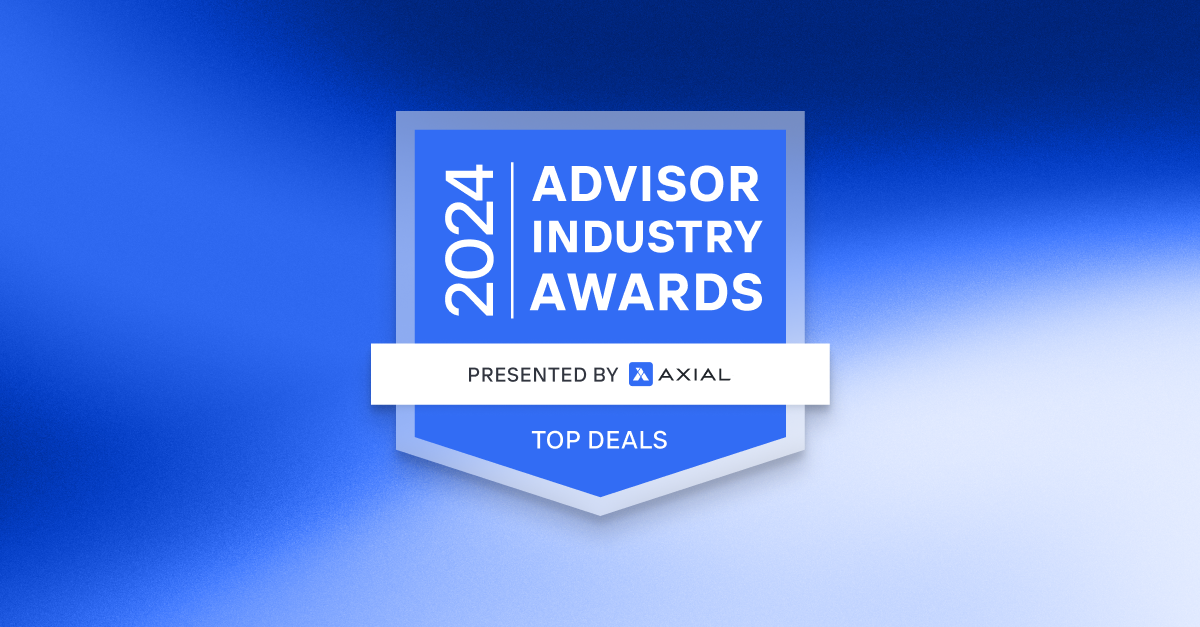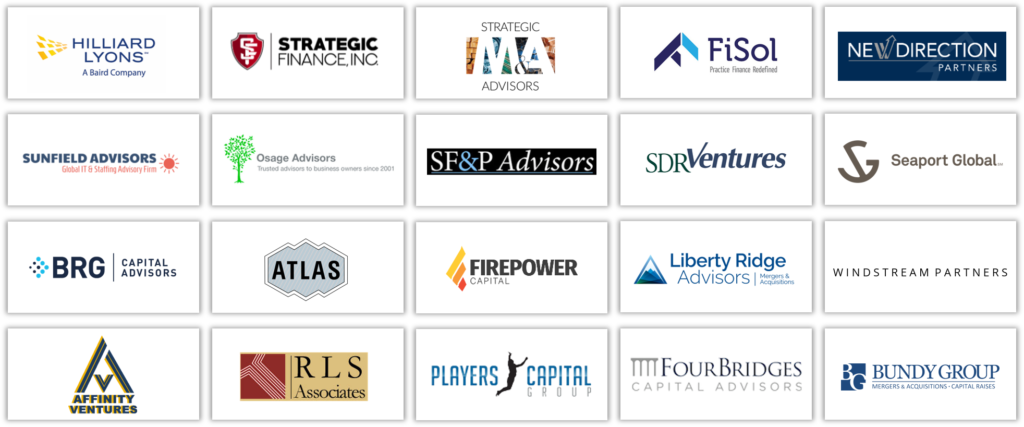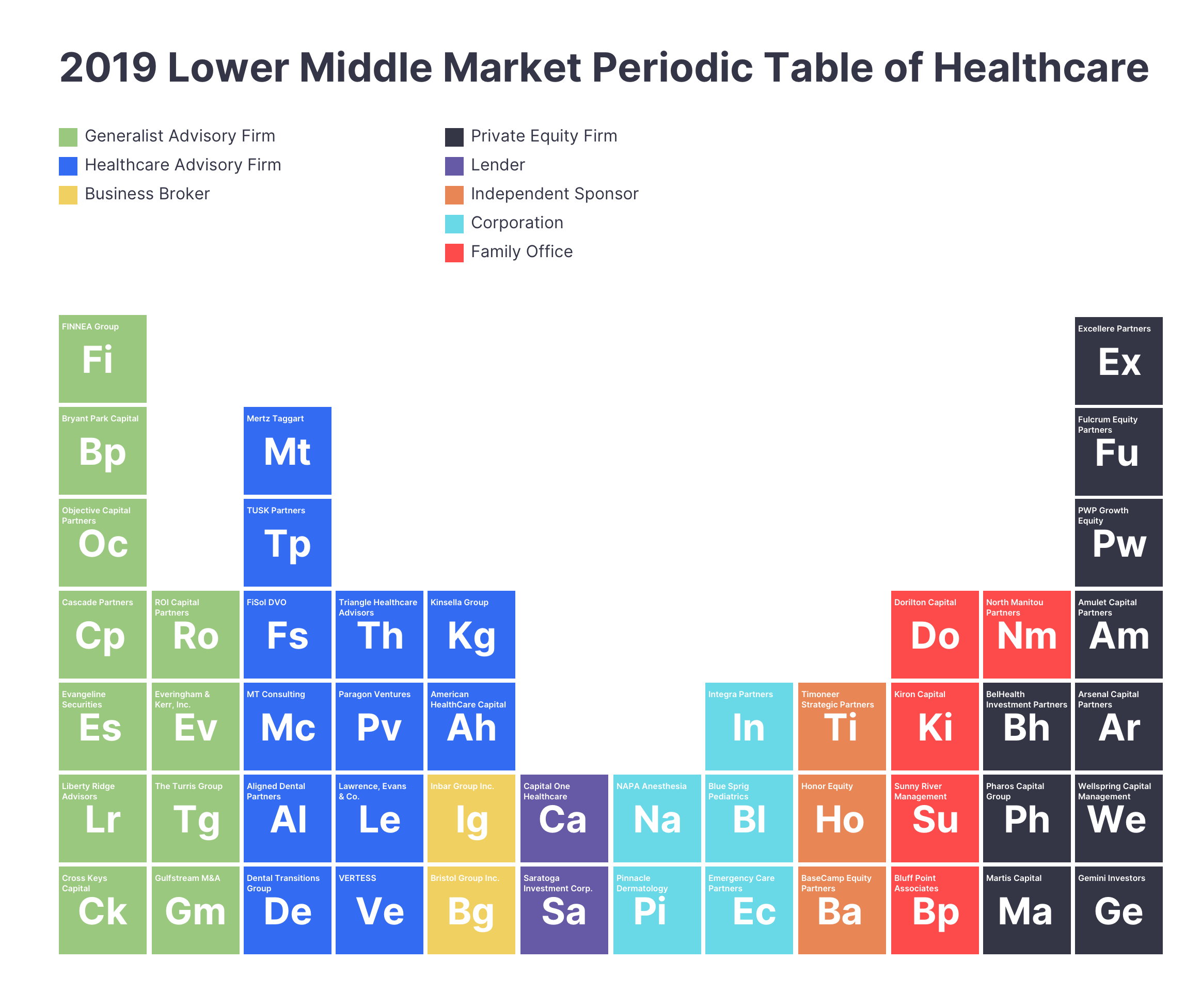
Advisor Industry Awards: The Top 12 Deals of 2024
Axial first introduced quarterly League Tables in 2019 to recognize the top Investment Banks and M&A Advisory Firms on Axial…
Happy New Year! As we move into 2020, we’re recapping the most popular Middle Market Review articles from the past year. Here are our top 10 most-read pieces.
1. (Tied)
Top 20 Lower Middle Market Investment Banks Q1
Top 20 Lower Middle Market Investment Banks Q2
Top 20 Lower Middle Market Investment Banks Q3
“Axial league tables take into account three main characteristics: client quality, buy-side targeting, and process effectiveness (for detailed methodology, see the end of this post).
For CEOs and dealmakers in the lower middle market, these league tables are a useful barometer to measure how an investment bank ranks against its peers, and how effective it is in financing and selling lower middle market businesses in various sectors.”

2. Axial’s 2019 Lower Middle Market Periodic Table of Healthcare
“Who are the most active healthcare investors and advisory firms in the lower middle market today? In Axial’s 2019 Lower Middle Market Periodic Table of Healthcare, we unpack insights from proprietary private transaction activity on Axial to determine not only which players dominate the space, but which healthcare sub-sectors are seeing the highest levels of current demand (rather than historical closure data) from financial investors and corporate acquirers.” Read more >

3. What Does an M&A Advisor Charge?
“Great M&A advisors are rare and highly valuable, hence they get paid well. You will need a lead transaction attorney and a lead outside accountant. If you’re used to spending a minimal amount on low-stakes legal issues, transaction fees can be a shocker. Don’t look at them as a zero-sum. Often a great advisor will charge you a lot and save you money.” Read more >

4. Opportunity Zones: The 101 Guide
“The act provides a huge tax-avoidance option for today’s investors, reducing capital gains taxes for equity investors putting capital to work in certain economically distressed areas around the country — known as ‘opportunity zones.’” Read more >

5. The Makings of the M&A Purchase Agreement
“In this article, we’ll provide a general overview of what’s contained within a typical purchase agreement, and a few tips to keep things running smoothly as the deal progresses toward the finish line. “ Read more >

6. Financing the Deal: Debt Types 101
“As the private equity market has matured, different types of debt have become more acceptable in the market, giving private equity buyers and their portfolio companies more options. What follows is an overview of debt that’s available and commonly used in private equity deals today.” Read more >

7. 5 M&A Advisors on What Sellers Worry About Most
“Selling a business is a big decision, and a little anxiety about the process is normal. We asked five M&A advisors about the biggest concerns they hear from clients.” Read more >

8. 4 New Buyers Aiming at the Lower Middle Market
“One of the perks of running a network for the lower middle market is we constantly get to meet new players on the scene. In this piece we wanted to highlight four new buyers: one committed capital fund, one search fund, and two independent sponsors.” Read more >

9. How This Family Office Differentiates and Sources Deals
“We talked to Managing Director Kevin Fahey, Managing Director of family office Bluff Point Associates, about how Bluff Point differentiates itself in a crowded market, how they source deals as a small firm, and the best parts of working in the lower middle market.” Read more >

“With high levels of dry powder, there is more pressure than ever from LPs on fund managers to put capital to work. As a result, LPs are increasingly focused on the deal pipeline. Enter the specialized business development professional. Over the years, private equity firms have realized that it’s far more efficient to have a dedicated person or team to cultivate relationships and find the right deal flow.” Read more >

